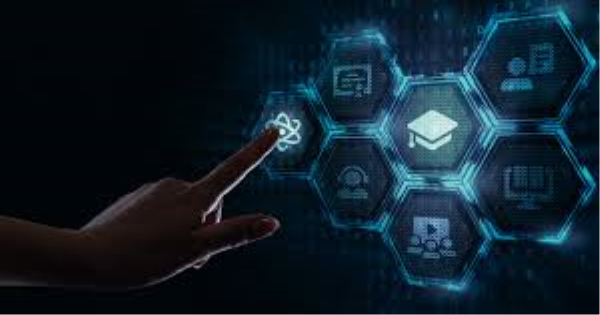In the ever-evolving landscape of education, students are constantly seeking smarter, more effective ways to absorb and retain information. One such powerful tool that has stood the test of time is mind mapping. This visual learning strategy taps into the brain's natural inclination for pattern recognition, association, and creativity. Whether you're a high school student preparing for exams or a university scholar organizing complex theories, mind mapping can significantly elevate your study game.

What is Mind Mapping?
Mind mapping is a visual representation of information where a central idea is placed at the center, and related concepts branch outwards in a non-linear fashion. Unlike traditional note-taking methods, which are usually linear and text-heavy, mind maps mimic the brain’s organic thought process. This method was popularized by British psychologist Tony Buzan in the 1970s, and it has since become a global phenomenon in education and business alike.
Why Mind Mapping Works
The effectiveness of mind mapping lies in its alignment with how the brain naturally works. Here’s why it’s so powerful:
-
Engages Both Hemispheres of the Brain: The left hemisphere processes logic and language, while the right deals with images and spatial awareness. Mind mapping combines words, colors, symbols, and diagrams, engaging both sides.
-
Encourages Active Learning: Instead of passively copying notes, creating a mind map forces the student to analyze and synthesize information.
-
Improves Memory Retention: Visual elements and spatial organization help in better recall, especially when mind maps include unique colors and illustrations.
-
Boosts Creativity and Critical Thinking: Mind maps allow students to make new connections between ideas, fostering deeper understanding and creative problem-solving.
How to Create a Mind Map for Studying
Creating an effective mind map is simple but requires a strategic approach. Follow these steps:
1. Choose a Central Idea
Start with the main topic you are studying—this becomes the core of your mind map. Write this in the center of a blank page and draw a circle around it.
2. Add Main Branches
From the central idea, draw branches that represent major subtopics or key concepts. For example, if your central topic is “Photosynthesis,” your main branches could include “Light Reactions,” “Chlorophyll,” and “Carbon Fixation.”
3. Include Keywords and Images
On each branch, add concise keywords, symbols, or images. Keywords keep the map uncluttered, while images enhance visual memory.
4. Use Colors and Symbols
Color-code your branches to differentiate between themes and highlight important points. This not only makes your map visually appealing but also helps categorize information effectively.
5. Expand with Details
Add smaller branches off each main idea to include definitions, formulas, examples, or explanations. These are your supporting details.
6. Review and Revise
Periodically revisit and update your mind map. You can add new insights, remove redundant information, or rearrange content to improve clarity.
Best Subjects for Mind Mapping
Mind maps can be used for almost any subject, but they are especially effective in the following areas:
-
Science: Visualize processes like the water cycle, cellular respiration, or the structure of atoms.
-
History: Organize historical events, timelines, and relationships between key figures.
-
Languages: Build vocabulary trees, grammar rules, and sentence structures.
-
Literature: Analyze characters, plot developments, and themes.
-
Business Studies: Break down marketing strategies, management theories, or case studies.
Mind Mapping Tools and Apps
While traditional paper-based mind maps are great, digital tools add convenience and flexibility. Here are some top apps:
-
XMind: User-friendly with templates and export features.
-
MindMeister: Great for collaboration and cloud storage.
-
Coggle: Offers real-time collaboration and clean, colorful designs.
-
SimpleMind: Available offline with intuitive features.
Tips for Smarter Studying with Mind Maps
To get the most out of your mind mapping efforts, keep these expert tips in mind:
1. Be Consistent
Stick to a consistent format and color scheme. This helps you build a mental pattern that’s easier to recall.
2. Use Visual Triggers
Integrate drawings, icons, or emojis as visual cues to reinforce memory.
3. Keep It Simple
Avoid overloading your map with text. The purpose is to simplify and visualize complex information, not to replicate your textbook.
4. Review Regularly
Revisiting your mind maps frequently enhances long-term retention. Use them for weekly reviews or before exams.
5. Make it Personal
Personal connections to the material—through color choice, humor, or imagery—can make the content more memorable.
Case Study: Real-Life Impact
Consider Sarah, a college student struggling with dense lecture notes in psychology. Traditional study methods left her overwhelmed and confused. Upon discovering mind mapping, she began summarizing each topic into visual branches. Within a few weeks, her comprehension improved, and she scored significantly higher on exams. Her ability to explain concepts and make interdisciplinary connections also improved—a testament to the power of visual learning.
Mind Mapping vs. Traditional Note-Taking
| Feature | Mind Mapping | Traditional Note-Taking |
|---|---|---|
| Structure | Non-linear, radial format | Linear, paragraph format |
| Visuals | High (colors, images, diagrams) | Low (mostly text) |
| Brain Engagement | Both hemispheres | Primarily left hemisphere |
| Memory Retention | Higher | Moderate |
| Creativity | Encouraged | Limited |
| Time Efficiency | Faster for reviews | Slower to scan through |
Clearly, mind mapping offers a more dynamic and engaging learning experience.
Related Articles
-
 Ilmkidunya 26/Jun/2025
Ilmkidunya 26/Jun/2025How to Prepare for Competitive Exams Effectively
-
 Ilmkidunya 10/Jun/2025
Ilmkidunya 10/Jun/2025From Curiosity to Career A Purpose-Driven Journey Through the 4D Growth Framework
-
 Ilmkidunya 10/Jun/2025
Ilmkidunya 10/Jun/2025The Ethics of Artificial Intelligence in Everyday Life
-
 Ilmkidunya 30/May/2025
Ilmkidunya 30/May/2025Over 1 Billion Users: Meta AI Sets New Standard in AI Technology
-
 ilmkidunya 27/May/2025
ilmkidunya 27/May/2025AI in Education – Will Students Stop Doing Homework in the Future?
-
 ilmkidunya 27/May/2025
ilmkidunya 27/May/2025Tech Skills That Will Never Go Out of Demand
-
 Ilmkidunya 09/May/2025
Ilmkidunya 09/May/2025How Computers Might Solve Problems We Don’t Even Understand Yet
-
 Ilmkidunya 08/May/2025
Ilmkidunya 08/May/2025Solving Compatibility Issues in Cross-Platform App Development
-
 Ilmkidunya 08/May/2025
Ilmkidunya 08/May/2025How Agile Methodologies Solve Project Management Problems
-
 Ilmkidunya 06/May/2025
Ilmkidunya 06/May/2025WhatsApp to Stop Working on These 3 iPhones: What Users Need to Know
-
 Ilmkidunya 02/May/2025
Ilmkidunya 02/May/2025The Digital Revolution in Education How Technology Is Reshaping Learning
-
 Ilmkidunya 25/Apr/2025
Ilmkidunya 25/Apr/2025WhatsApp Introduces Advanced Chat Privacy Feature: A New Era of Messaging Security
-
 Ilmkidunya 25/Apr/2025
Ilmkidunya 25/Apr/2025Smartphones in 2025: What to Expect from Future Mobile Devices
-
 Ilmkidunya 24/Apr/2025
Ilmkidunya 24/Apr/2025OPPO K13: A Game-Changer with 7000mAh Battery and 80W Fast Charging
-
 Ilmkidunya 24/Apr/2025
Ilmkidunya 24/Apr/2025China Introduces Revolutionary 10G Broadband Internet Service
-
 Ilmkidunya 22/Apr/2025
Ilmkidunya 22/Apr/2025YouTube Music Adds 'Consistent Volume' Feature for Smoother Listening
-
 Ilmkidunya 22/Apr/2025
Ilmkidunya 22/Apr/2025Smartphones for All Policy Near Completion: IT Minister Shaza Fatima
-
 Ilmkidunya 18/Apr/2025
Ilmkidunya 18/Apr/2025Scientists Create 1cm Wireless Flying Robot Inspired by Honeybees
-
 Ilmkidunya 17/Apr/2025
Ilmkidunya 17/Apr/2025Signs of Life Detected on Exoplanet K2 B
-
 Ilmkidunya 17/Apr/2025
Ilmkidunya 17/Apr/2025Pakistan Announces Major IT Initiatives to Boost Digital Transformation and Investment

.gif)









.png)


Share Your Comments Questions Here